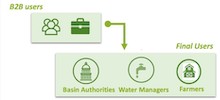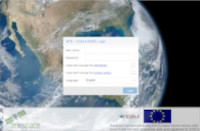- About us
- Project
- Publications
-
Deliverables

D6.4 – Promotional material
December 31, 2020DeliverablesThe aim of the communication materials is to publicise the COALA Project among potential users. This Deliverab...

D6.2: Communication and Disseminati...
December 31, 2020DeliverablesThis Deliverable is an update of the first version of the Communication and Dissemination Plan.

D4.1: Baseline Description of Pilot...
September 30, 2020DeliverablesThis Deliverable describes the pilot experiments of COALA Project. Participatory evaluation of the COALA servi...
- Media Room
-
News

COALA Project: A Success St...
August 20, 2023Blog, Evidenziato, News, Press ReleaseThe COALA Project, a European Union funded project involving a collaborative initiative between the European U...

Workshop on COALA business model
December 19, 2020News
Plenary meeting November 23, 24 and...
December 1, 2020NewsThe plenary meeting of COALA Project has been held on 23rd, 24th and 30 November 2020

Webinar: Governance of Water Scarci...
November 17, 2020NewsThanks to Copernicus data, Europe and Australia launch a new challenge to improve the management of water and ...
- Blog
- Resources
-
- November 30, 2020
- White Research
- Blog, Uncategorized
- No Comments
Water and nutrient management in Australia

Water and nutrient management in Australia
Creating business value from data
This blog contribution on water and nutrient management is from White Research. White Research (WR) is a social research and consulting subject matter expert. We specialise in consumer behaviour, market analysis, business planning and innovation management.
During the past few months, the COALA team has been closely working together with Australian stakeholders in water and nutrient management. COALA’s goal is to shape the Earth Observation (EO)-based services that will be developed during the project. These services aim to guide users on reducing the waste of water and minimising the money spent on nutrients. These objectives are key in light of increasingly extreme weather events in the country.

Co-creation is a central part of this process.
So how have potential customers been involved in the project thus far?
Despite the COVID-19 pandemic, we have been working hard during the past months gaining a better understanding of market needs. We spent these past months conducting interviews with key stakeholders.
We have just kicked off our demo season showing potential early adopters what COALA services could bring to their activities. This is important to ensure that COALA value propositions match the needs expressed by market participants. In parallel, we have also started with the development of different business scenarios. Potential customers’ inputs are central to these efforts. We will consult them on key elements, such as pricing, as the setup of the business venture becomes clearer.

So what does customer-centric design really mean?
Customer-centric design puts customers at the core of the project to build long-term relationships. These relationships are based on iterative customer feedback, which drive the continuous improvement of the services being developed. Hereby, significant resources are dedicated to understanding potential customers and leveraging these insights to further shape the services on offer. COALA has tried to do this since the beginning, through its advisory board and on-the-ground interviews with business prospects.
So what have we discovered during the first 10 months of our COALA journey?
Prospects highlighted a key element, their reluctance to get familiar with yet another platform. This was a key piece of knowledge in delivering COALA services to support water and nutrient management. There are already several players in the market. And this has several implications as to how to best penetrate this market as an ‘outsider’.
So how does this affect how we market our services?
For the abovementioned reasons, we want to leverage existing networks in the sector. We will partner with business intermediaries who are interested in integrating COALA services in their service offering. Using these partnerships, potential customers can access new services through platforms they are already familiar with.
At the same time, business users can expand their service offering and European project partners can leverage existing networks. This strategy removes the cost barrier related to penetrating the Australian EO market without local sales networks in place. Of course, this is only the beginning of our 3 year-long journey. We will continue to develop services that can help Australian stakeholders to better manage scarce resources (such as water), while at the same time maintaining the competitiveness of the country’s agricultural sector.
In the upcoming period, we will further refine different business scenarios and work closely together with Australian pilot participants to determine suitable pricing structures and marketing strategies


















